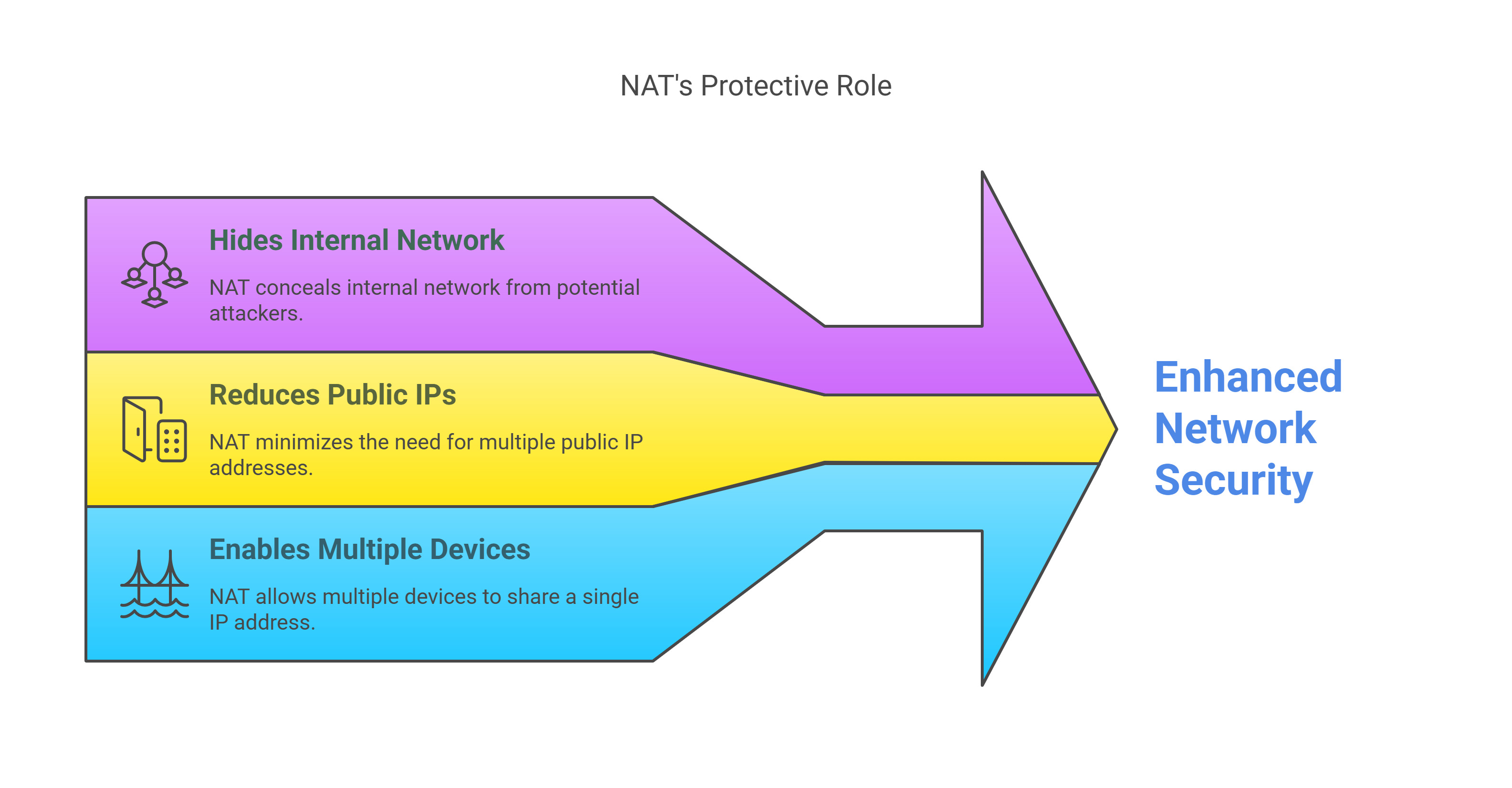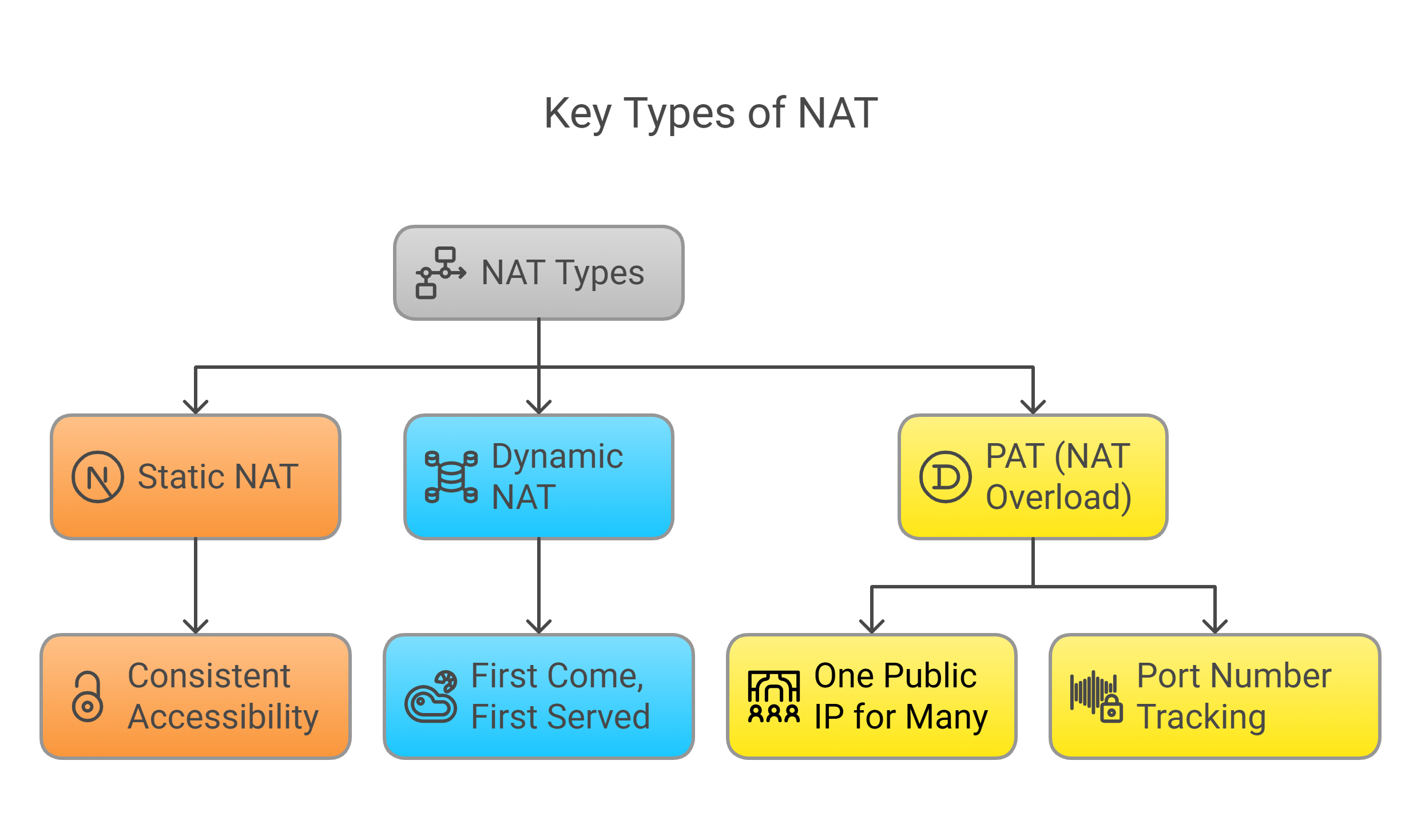
How NAT Is the Network’s Witness Protection Program🕵️♂️
“You talkin’ to me?” – Private IPs, probably.
Welcome to the seedy underbelly of the internet—where packets move in silence, IPs change identities, and privacy is the name of the game. If you’ve ever wondered how your devices stay hidden while still accessing the world wide web, meet the Tony Soprano of the networking world: Network Address Translation (NAT).
In this article, we’re putting the “fun” in “functional IP readdressing strategy.” So sit tight, because we’re going to explain NAT in a way that even your cousin Vinny (who still thinks dial-up is cutting edge) can understand.
What Is NAT, Really? 🧠
Think of NAT as the witness protection program for your devices. Every time a device on your home network wants to visit the internet, NAT steps in and says:
“Fuhgeddaboudit, I got this.”
Your private IP stays safe and sound, while NAT swaps it out for a public one. The return messages? They go back through NAT, who makes sure they get delivered to the right undercover device.
📡 Technical Translation:
NAT (Network Address Translation) is a method used by routers to modify IP address information in packet headers.
It enables multiple devices on a private network to access the internet using one public IP address.
It helps with IP address conservation, network security, and hiding internal network structures.
🔍 Why NAT Exists – A Tale of IP Scarcity
In the late 1980s, engineers realized that the pool of available IPv4 addresses was going to run out faster than a mobster’s luck in a double-cross. Enter NAT, the clever workaround to reuse private IPs behind a single public one.
According to the Internet Engineering Task Force (IETF), NAT was first detailed in RFC 1631, which outlined a simple but genius way to stretch IPv4 resources. Kind of like turning one pizza into twelve slices.
🔥 Insight from Cisco: “NAT helps improve security and decrease the number of IP addresses an organization needs.” – Cisco Networking Academy
The Key Types of NAT (Or, “Which Alias You Usin’ Today?”) 🎭
1. Static NAT
One-to-one mapping.
Like giving every mobster a permanent fake name.
Used when a device needs to be consistently accessible from the outside (e.g., a web server).
2. Dynamic NAT
One-to-one mapping from a pool of public IPs.
First come, first served. Don’t show up late to this party.
3. PAT (Port Address Translation) aka NAT Overload
The Don of NAT methods.
Uses one public IP for many private IPs by tracking port numbers.
Think of it like a bouncer at a speakeasy checking who goes in and out—everyone gets in, but with a different password (port).

How NAT Protects You Like a Loyal Bodyguard 🔐
Private IP addresses are like secret mob hideouts. NAT makes sure those addresses stay hidden from the public eye.
✅ Hides your internal network from potential attackers
✅ Reduces the need for a public IP for every device
✅ Enables multiple devices to access the internet with one IP
If a hacker tries to trace you? Good luck. They’ll be led straight to the NAT device—who ain’t talking.
How It Works – The Packet Walkthrough 🚥
Let’s walk through a quick job:
Your device says, “I wanna visit www.example.com.”
The router steps in (cue mob boss music) and rewrites the source IP from your private address (e.g., 192.168.1.10) to the public IP (e.g., 123.45.67.89).
Example.com replies.
NAT translates the destination IP back to your private IP and forwards it to your device like nothing happened.
Smooth. No one saw nothin’. Capisce?

Real World Example: Your Wi-Fi at Home 💡
Let’s say you have 8 devices connected to your Wi-Fi—phones, smart TVs, your smart fridge that keeps DMing you pictures of expired yogurt. They all have private IPs. But only one public IP goes out to the web.
Thanks to NAT, all your devices can surf the internet without blowing your cover.
Why It Matters for IT Certifications (and Real Life) 👨🏫
If you're chasing certs like CompTIA Network+, Cisco CCNA, or AWS Certified Solutions Architect, understanding NAT is non-negotiable. It’s a cornerstone of network design, cloud configuration, and security architecture.
In job interviews, if they ask about NAT and you say, “Uh… is that like, Google Maps for nerds?”—well, don’t expect a callback.
Expert Insight from the Field 🎓
“NAT is one of those technologies that keeps the modern internet running behind the curtain. It’s not glamorous, but it’s essential—like the guy who ‘cleans up’ after a job.” – Ethan Banks, Co-Founder of Packet Pushers
🔚 Final Thoughts – The Godfather of Networking Tricks
NAT is the unsung hero of the internet—your personal privacy guard and traffic controller, all rolled into one.
Without it, every device would need its own public IP, and you'd need a second mortgage to pay for them. With it, you stay safe, efficient, and connected. Just like a well-run family business.
So next time your Netflix stream doesn’t buffer and your boss’s email hits your inbox on time, give a little nod to NAT. He’s the reason your digital family stays off the radar.
📢 Ready to make your IT cert prep less “sleepy textbook” and more “Netflix binge-worthy”?
👉 Bookmark this blog, share it with your study crew, and subscribe for more tech explainers that don’t suck the life out of you.
Oh—and tell your router we said thanks. He’s doing the real work.
 Add Row
Add Row  Add
Add 




Write A Comment